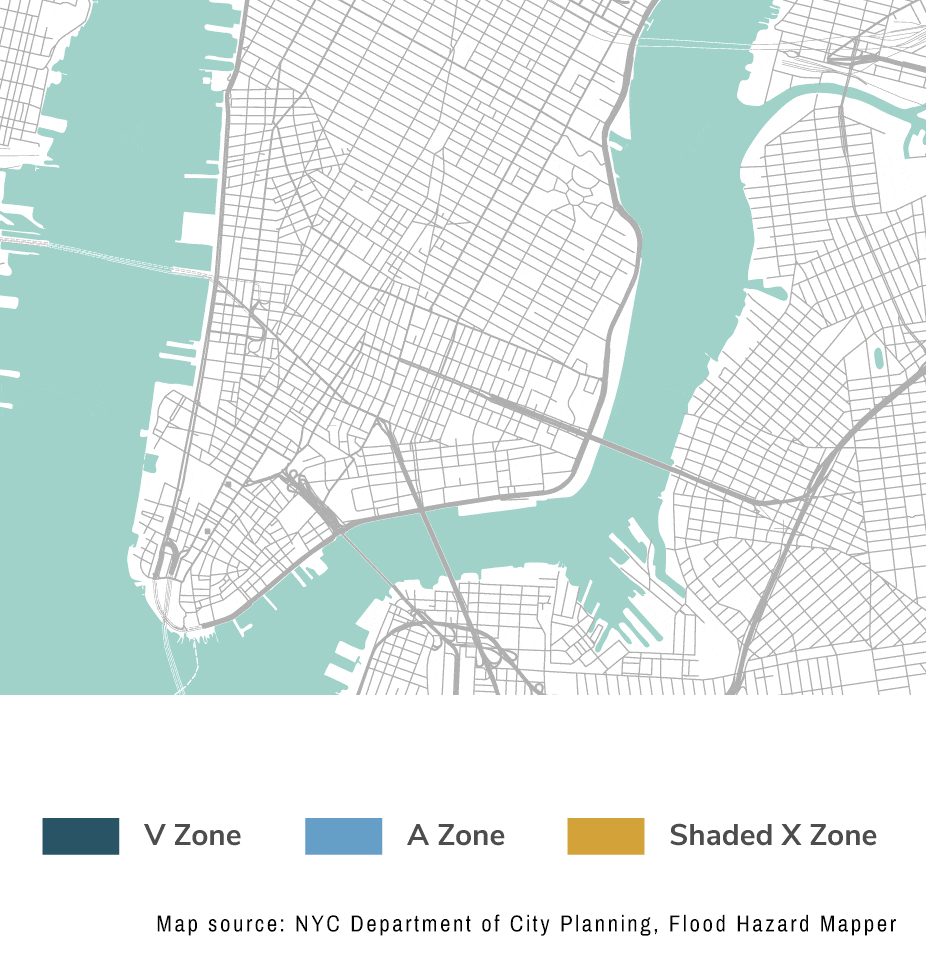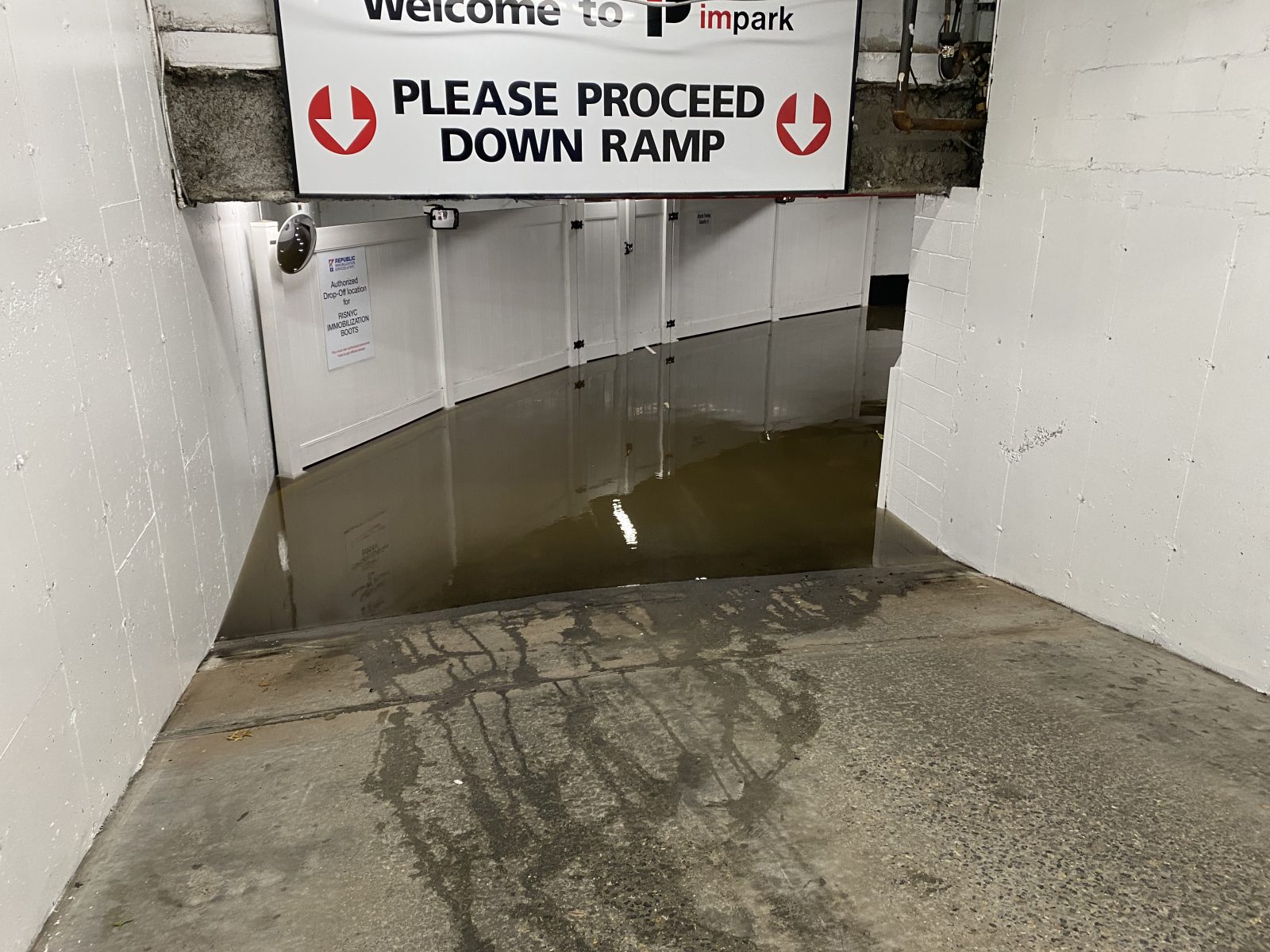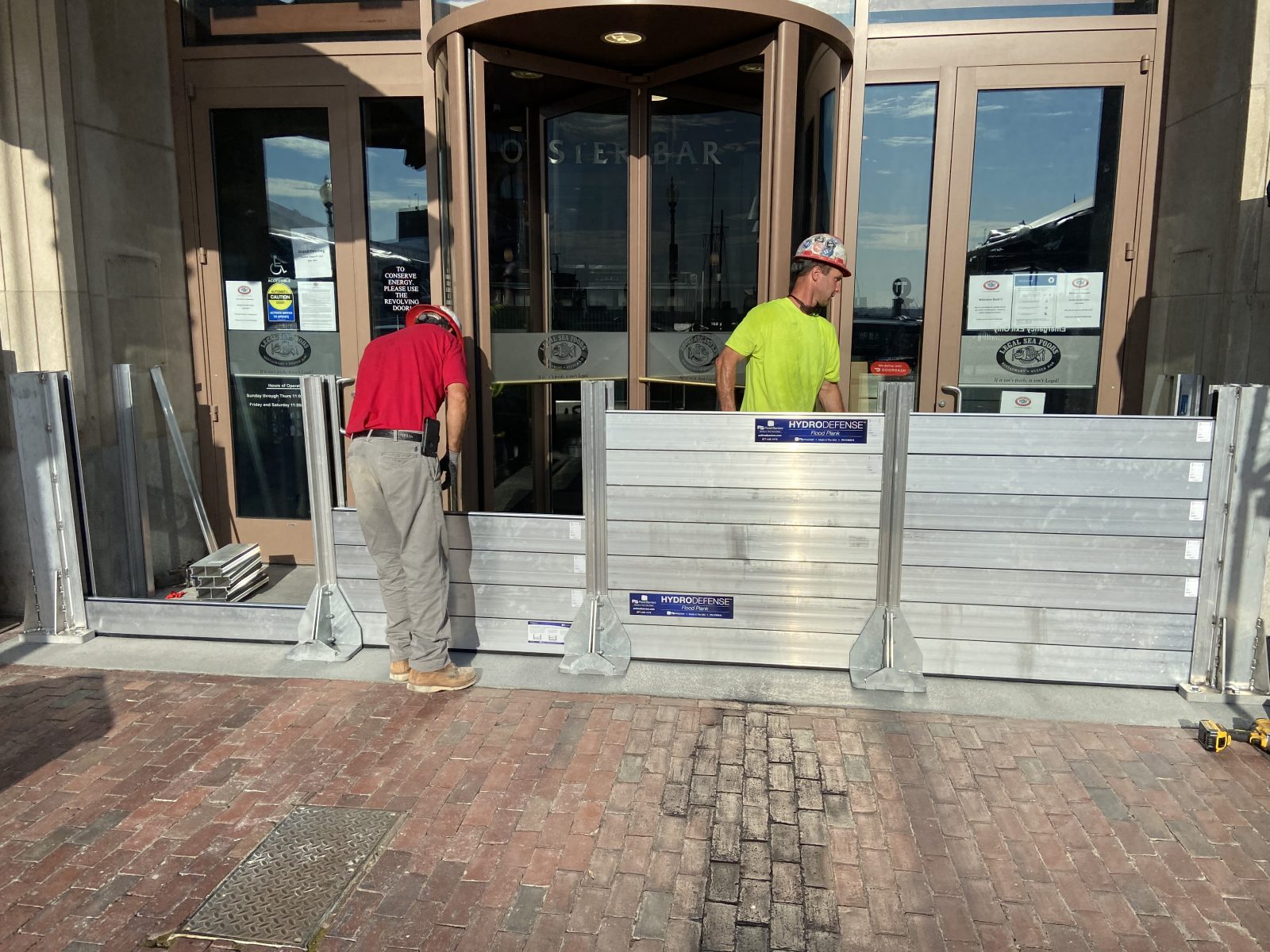Navigating New Flood Regulations in New York City: Updates to Appendix G in the 2022 NYC Building Code

Navigating the ever-changing landscape of flood regulations as a building owner, developer, or designer can be complex. The provisions are numerous, complicated, and often conflicting, and can have a large impact on overall project design. In particular, the New York City Building Code (NYCBC) contains flood requirements throughout its various chapters that have critical implications on building projects, particularly the newly updated Appendix G, “Flood-Resistant Construction.” Understanding these provisions and incorporating them into design decisions and project programming at the inception of a project is key.
New and Changing Flood Risks
Flooding is one of the nation’s most costly natural hazards, contributing to billions of dollars of damage to our built infrastructure every year. Meanwhile, sea level rise and other consequences of climate change are projected to worsen these issues in the future. Most jurisdictions in the United States impose flood design regulations that match the minimum requirements of the National Flood Insurance Program (NFIP), which adopts the 1%-annual-chance flood (also known as the “100-year” flood or the “Base Flood”). Therefore, at minimum, most building codes and regulations impose flood mitigation design requirements based on the 100-year flood, as depicted in the Federal Emergency Management Agency’s Flood Insurance Rate Maps (FIRMs).
Many existing buildings lie in areas at risk of flooding without any mitigation measures, either because they pre-date modern flood-resistant design standards and have not undergone a substantial improvement or because the regulatory FIRMs have recently changed and designated the area at greater flood risk. In some jurisdictions, even new buildings are often designed and constructed based on outdated or inaccurate FIRMs, leading to a higher degree of flood risk than an owner, developer, or designer might expect. Because of these changing risks, flood mitigation measures may be improperly designed, constructed, maintained, or implemented and fail to perform as intended during a flood event.

Local Flood Regulations Often Exceed National Requirements
As a result of these various challenges, some communities have begun implementing enhanced flood regulations that go well beyond the minimum requirements of the NFIP. These regulations are typically aimed at addressing the following concerns:
- Risk of flood events exceeding the 100-year flood mapped on the FIRMs
- Increasing severity and frequency of flooding due to climate change
- Improperly designed and constructed buildings in flood hazard areas
- Inadequate operational and maintenance programs for flood mitigation systems
- Existing buildings without any means of flood protection
- Gaps and loopholes in traditional flood design requirements
Enhanced flood regulations are often complex and may conflict with one another, posing a challenge to designers seeking to obtain approval for a project. Failure to meet the requirements can impact a project’s viability.


While even traditional flood mitigation design requirements can present challenges, enhanced regulations such as those present in the 2022 NYCBC may require complex solutions that could prove disruptive if not identified and integrated during the early stages of a prospective project.
New Flood Regulations Take Effect in New York City
New York City is subject to several types of flood hazards: coastal flooding from hurricanes and nor’easters, riverine flooding along overwhelmed rivers and creeks, and local flooding from surcharged stormwater systems. NYCBC’s Appendix G regulates construction for both new and existing buildings in mapped flood hazard areas. Even prior to the latest edition, previous editions of NYCBC Appendix G included some provisions that are more stringent than most other municipal jurisdictions, such as the adoption of preliminary FIRMs and Flood Insurance Study (FIS) reports.
The 2022 edition of NYCBC went into effect in November 2022 and includes many updates to Appendix G, which impose enhanced design requirements exceeding those of the NFIP and the International Building Code. Notably, these enhanced provisions:
- Expand the applicability of flood-resistant design and construction provisions for certain projects involving existing buildings, even when the project cost is less than the substantial improvement threshold.
- Extend the requirement to design hospitals for the 0.2%-annual-chance (“500-year”) flood event to all Flood Design Class 4 buildings.
- Require the submission of Flood Zone Compliance Plans for all applicable projects.
- Introduce mandatory annual inspections and full-scale triennial deployments of dry floodproofing systems.
- Enforce restrictive declarations in residential buildings to prohibit future changes in the use of wet floodproofed enclosures.
- Establish requirements for an alternate means of emergency egress for dry floodproofed buildings, including provisions related to travel distance; signage; accessibility; and temporary stairs, ramps, and platforms.
- Introduce provisions defining the use of flood-resistant glazing.

Reacting to a Changing Regulatory Landscape
While even traditional flood mitigation design requirements can present challenges, enhanced regulations such as those present in the 2022 NYCBC may require complex solutions that could prove disruptive if not identified and integrated during the early stages of a prospective project. The prevalence of enhanced regulations is likely to increase in concert with the projected effects of climate change on future flood events and the inherent uncertainty of those projections. A successful flood mitigation design depends on knowledge of these rapidly changing regulations and a thorough understanding of site-specific flood hazards (both present-day and future), the technical aspects of flood mitigation, and the operational constraints for buildings.